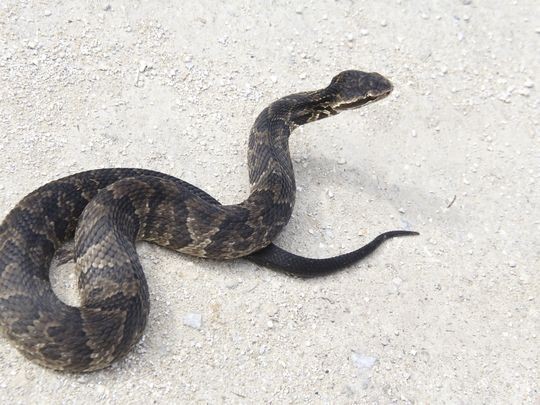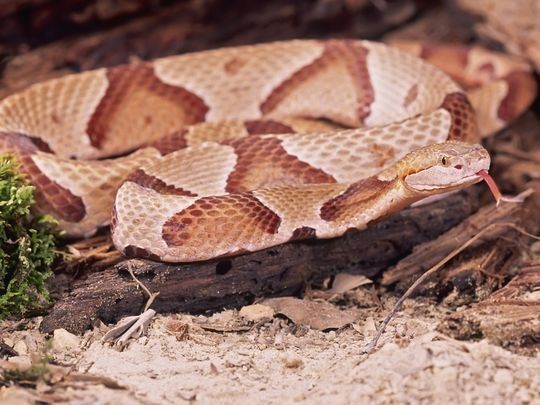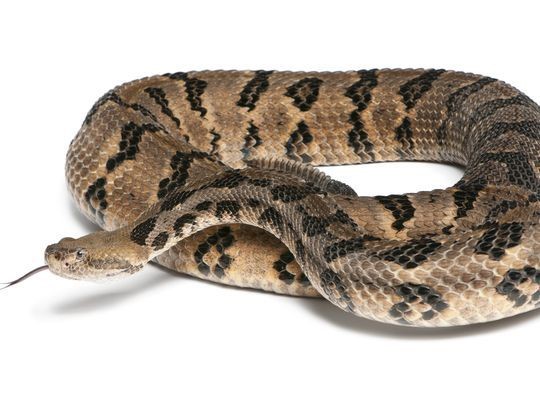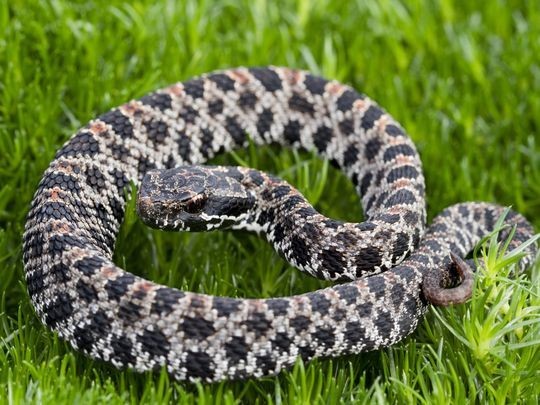Indications for Crofab include: systemic symptoms, coagulopathy , and progression of swelling. Most of the snakes in our state cause swelling as opposed to coagulopathy or systemic symptoms (although of course some do). First aid includes elevation of extremity. Progression of swelling means that swelling is progressing and the distal part of the extremity is not decreasing in size, as would occur with gravity, i.e. the swelling decreases distally and increases proximally (which is what you want). Call the TN Poison Center to discuss indications for Crofab. ds
Who Am I and How Did I die?
I’m a person from ancient days.
Infamous for my worldly ways.
Legends abound about my life.
One claims I was my brother’s wife.
Perhaps my power-hungry vein,
Caused me to go a bit insane.
For the stories have depicted,
A fatal wound, self-inflicted.
Did the puncture produce great pain?
And did I vomit from the strain?
Was the site red, blistered, and bruised?
Did I weaken and act confused?
Was I too numb to thrash about?
Did I get dizzy and black out?
Did my body begin to swell?
Was my heart racing as I fell?
Did I twitch as my body bled?
How long before they deemed me dead?
Were there easier ways to go?
Was I, in fact, my greatest foe?
Whispers persist of my demise,
But is it all a pack of lies?
Who am I, and how did I die?
Answer: Cleopatra - Snake Bite
So, what is the point of this ode? Well, spring is around the corner, bringing a fresh batch of snake bites and envenomations. Tennessee plays host to 34 species of snakes, four of which are considered venomous: the Copperhead, the Timber Rattlesnake, the Pygmy Rattlesnake, and the Western Cottonmouth.
While every snake bite will produce minor redness, irritation, swelling, and bleeding to the bite site area, only the venom from these four Crotalinae family members can potentially trigger serious and possibly fatal effects in their Tennessee victims. Distinguishing between a venomous bite and a non-venomous bite cannot be done based on the appearance of the bite site alone; thus all bites from snakes of unknown origins must be treated as venomous bites until envenomation is ruled out. What symptoms must healthcare professionals observe for to determine if a Crotalinae bite occurred?
Cottonmouth or Water Moccasin

The Water Mocassin or Cottonmouth is one of four venomous snakes in Tennessee.
(Photo: ArendTrent, Getty Images/iStockphoto)
With Crotalinae bites, the venom is commonly deposited intradermally , subcutaneously, or intramuscularly. Venom insertion directly into blood vessels is rare. Crotalinea snake venoms contain intricate mixtures of metal ions and complex proteins that elicit local, coagulation, and systemic abnormalities within minutes to several hours post-bite. Abnormalities may include:
Local Effects: Fang marks, scratches, or lacerations may be present. Pain, swelling, ecchymosis, and hemorrhagic blebs can appear within minutes. Edema can progress for several days with a risk of compartment syndrome development. Tissue necrosis with vascular damage may occur. Coagulation Effects: Platelet and coagulation cascades can be affected, with increased INRs, prolonged PTTs, decreased fibrinogens, fibrin split products elevations, and thrombocytopenias. Hemolysis and bleeding could ensue with widespread ecchymosis, petechiae, and purpura.
Systemic Effects: Nausea, vomiting, diarrhea, numbness, and oral tingling may develop as early warning signs of systemic involvement, and abruptly progress to dizziness, agitation, confusion, tachycardia, hypotension, diaphoresis, weakness, paresthesias, fasciculations, rhabdomyolysis with hyperkalemia, hematuria, hemoconcentration, airway compromise, intravascular volume depletion, angioedema, and shock.
Northern Copperhead

Northern copperhead snakes are among Tennessee's venomous snakes.
(Photo: John Pitcher, Getty Images/iStockphoto
Assessment and management of the patient should begin immediately upon arrival. The initial standard treatments of all snake bite victims should consist of:
• Provide wound care and a tetanus vaccination update.
• Remove any constrictive clothing, jewelry, or tourniquet if applied prior to arrival.
• AVOID the use of ice or heat at the site as these will further damage the fragile tissue.
• AVOID cutting the wound and applying tourniquets.
• Elevate the bite area, allowing gravity to assist in limiting local edema.
• Obtain IV access.
• Mark and measure the circumference and edema edges every 30 minutes.
• Maintain an NPO status until the envenomation is controlled
• Laboratory workup on initial presentation, at six hours post-arrival, and at twelve hours post-arrival must include:
o A complete blood count (H/H, platelets),
o Coagulation profiles (PT, INR, PTT, fibrinogen),
o A basic metabolic profile, and
o A type & screen if a significant envenomation is present
Timber Rattlesnake

Timber rattlesnakes can be found in wooded areas of Tennessee.
(Photo: GlobalP, Getty Images/iStockphoto)
All snake bite patients who present with fang marks must be observed for a minimum of 12 hours with frequent reassessments for symptom progression. Continued observation and aggressive management will depend on the envenomation’s severity. Bites are classified as:
No Envenomation: Fang marks without other symptoms
Minimal Envenomation: Minor local effects without swelling progression beyond the bite site
Moderate Envenomation: Swelling advancement beyond the bite site with modest coagulation and systemic abnormalities
Severe Envenomation: Significant local effects with profound swelling, critical coagulopathies, and serious systemic symptoms
The absence of all manifestations 12 hours after a bite denotes a lack of envenomation or a “dry bite”. However, the slow onset and/or escalation of symptoms is not indicative of the envenomation’s severity; therefore, conferring with toxicology experts about the management of each snake bite case is always paramount, even if symptoms appear unremarkable on initial presentation and especially if the use of antivenom (CroFAB) is being considered. The poison specialists and toxicologists of the Tennessee Poison Control Center can assist with snake bite questions and concerns. Feel free to contact the TPC for consultations at any time.
As a side note regarding the Cleopatra saga, legend conveys that she was bitten by an Asp or Egyptian Cobra, a symbol of royalty at the time. Cobras belong to the Elapidae family and have strong neurotoxic effects. Cleopatra may have suffered from local pain, swelling, and necrosis, but paralysis of her cranial nerves could have begun within 15 minutes of the bite. Coagulation abnormalities would likely not have been an issue for her. Of interest, recent scholars have deduced that Cleopatra had keen knowledge of poisons and likely died after drinking a mixture of hemlock, wolfsbane, and opium, but that is a discussion for another question of the week.
Pygmy Rattlesnake

While rare, the Pygmy Rattlesnake may be found in Tennessee.
(Photo: Mark Kostich, Getty Images/iStockphoto)
>Tennessee Herpetological Society. Snakes of Tennessee, http://www.tennsnakes.org/
>Gray, M. Poison, not snake, killed Cleopatra, scholar says, CNN. http://www.cnn.com/2010/WORLD/europe/06/30/cleopatra.suicide/index.html
> Poisondex Managements. United States Snakes - Crotalinae, Truven Health Analytics Inc
> Poisondex Managements. African Snakes – Elapidae, Truven Health Analytics Inc
> https://www.tennessean.com/story/news/local/2016/03/17/tennessees-snake…
This Question was prepared by: Cheri Wessels, RN, BSN, MBA, CSPI
I am interested in any questions you would like answered in the Question of the Week. Please email me with any suggestion at donna.seger@vanderbilt.edu.
Donna Seger, MD
Medical Director
Tennessee Poison Center
www.tnpoisoncenter.org
Poison Help Hotline: 1-800-222-1222